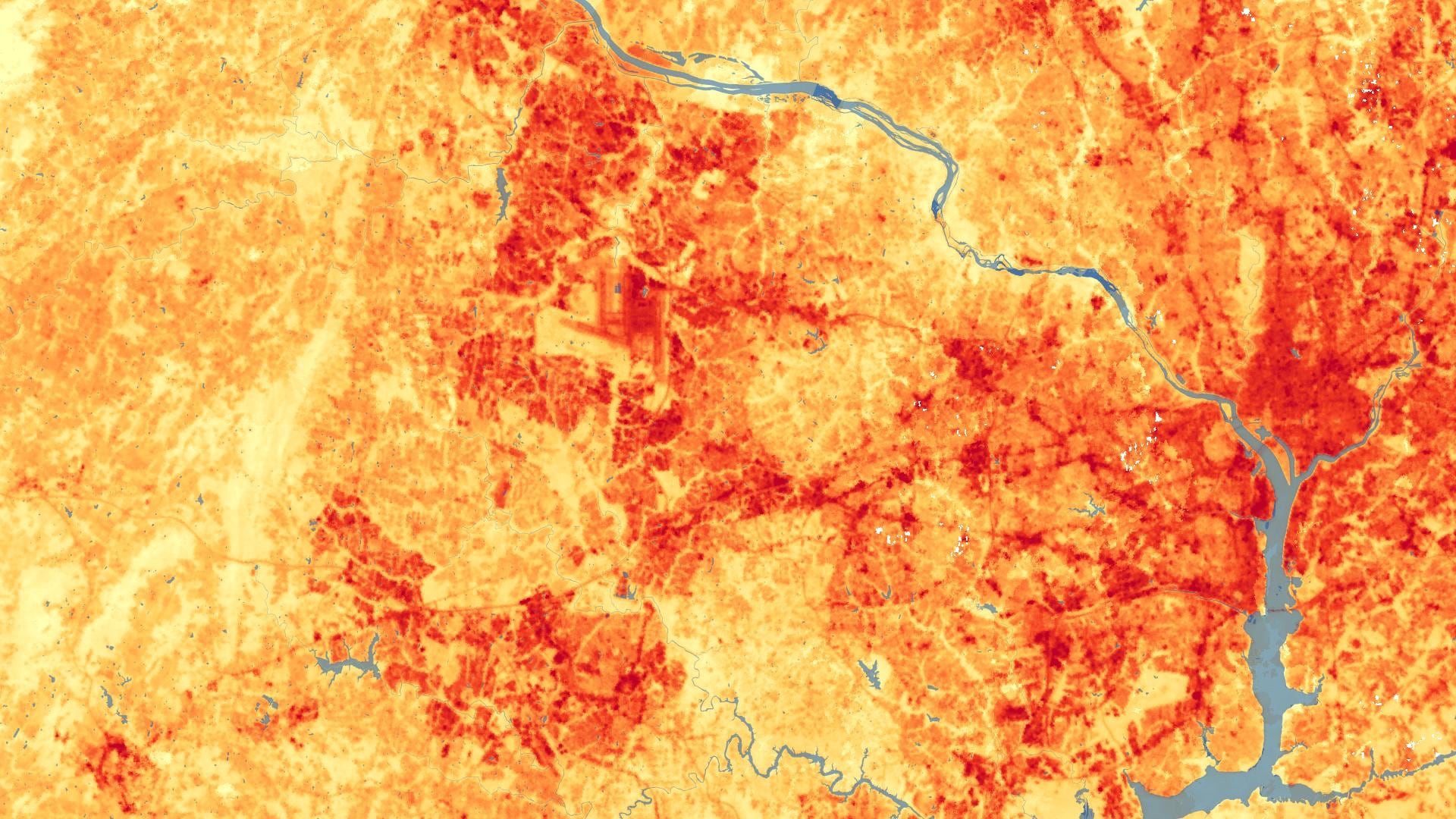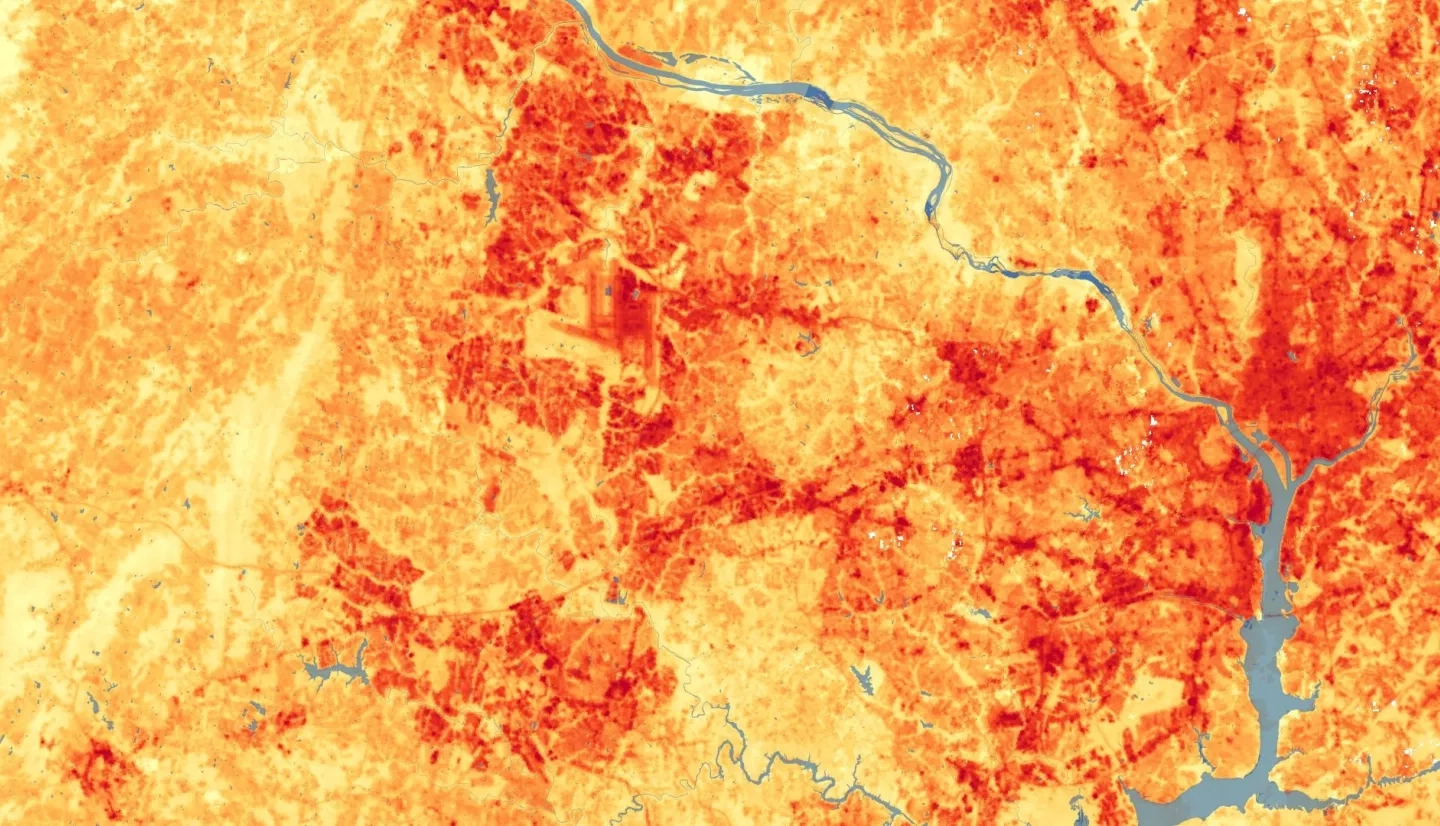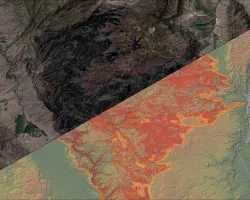
Extreme high temperatures lead to increased instances of cardiovascular disease, pulmonary disease, and even death, as well as increased energy consumption and infrastructure costs. People in urbanized areas experience higher temperatures than rural areas due to diminished vegetation and increased impervious surfaces which absorb and radiate heat. Fairfax County, Virginia has embarked on Resilient Fairfax, a program aimed at addressing climate adaptation and resilience. The DEVELOP team partnered with the Fairfax County Office of Environmental and Energy Coordination (OEEC) to assess the extent of the urban heat island effect on the county and its most vulnerable populations. The team used data from Landsat 8 Operational Land Imager (OLI) and Thermal Infrared Sensor (TIRS), as well as the ECOsystem Spaceborne Thermal Radiometer Experiment on Space Station (ECOSTRESS) for the years 2013 to 2021 and found that the hottest spots were in densely urbanized areas, with temperatures as much as 47°F above that of undeveloped reference areas. The team used the Integrated Valuation of Ecosystem Services and Tradeoffs (InVEST) urban cooling model and determined that areas with higher tree canopy cover had greater heat mitigation capacity. Estimates from the InVEST model showed that a 4.5% increase in canopy cover across the county could result in a temperature reduction of up to 2.4°F in some areas. The results will allow partners to assess heat distribution across Fairfax County and implement effective mitigation strategies, including locating prime locations for cooling centers and increasing canopy cover.



